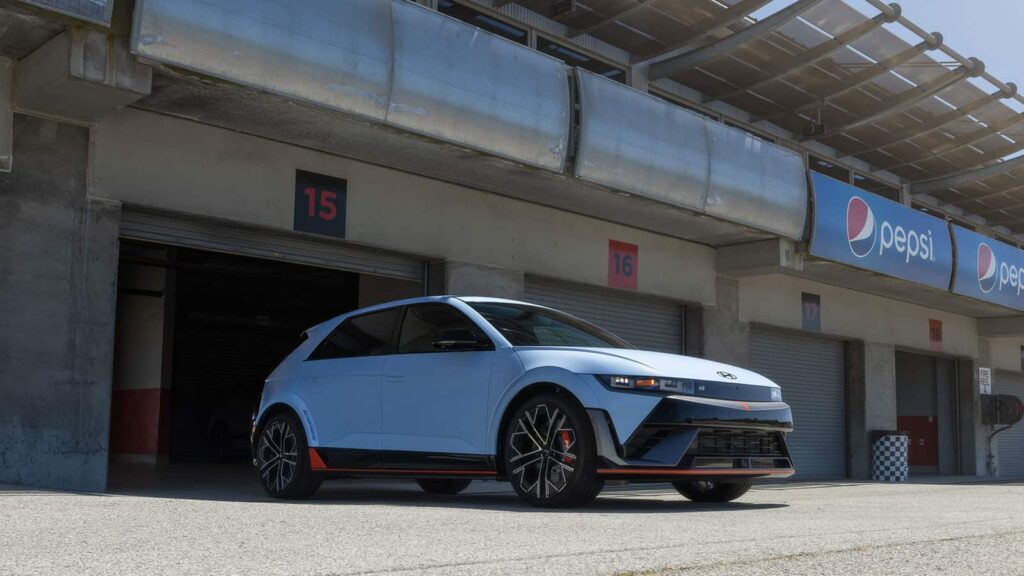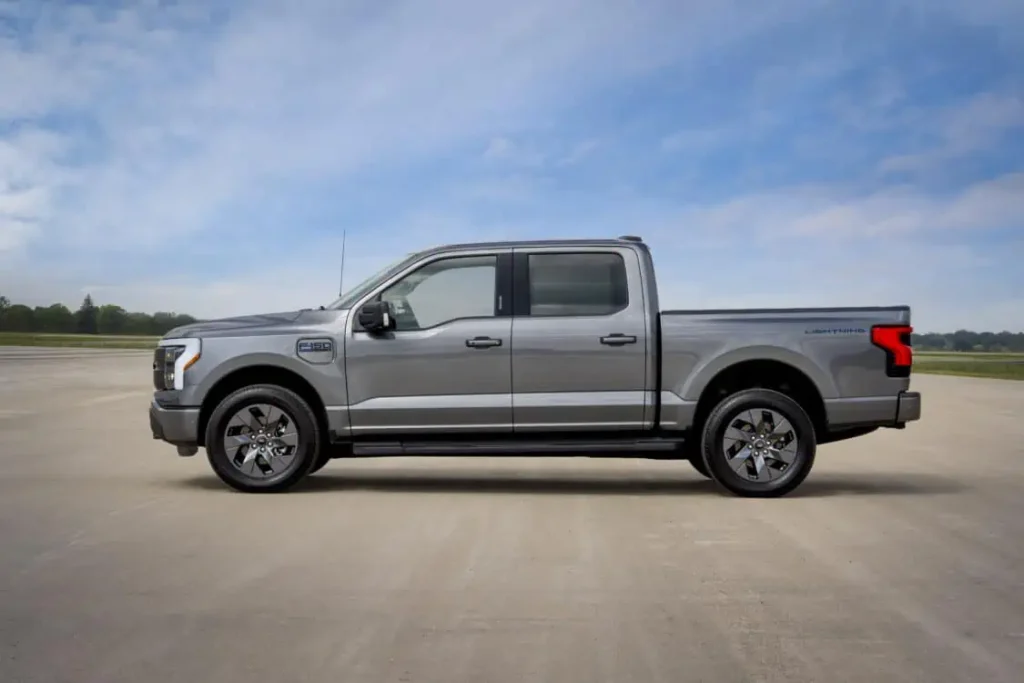Take Advantage of up to $7,500 in Federal EV Tax Credits While You Can
There is a lot of speculation about the incoming administration’s handling of federal tax credits and subsidies for the EV industry. Most experts agree the federal clean vehicle tax credits of up to $7,500 are likely to be cut next year. President-elect Trump will be sworn in on January 20, so we recommend completing your purchase of a new or used EV before then, to be sure you qualify for the tax credits.
OEMs such as Ford, GM, Hyundai, BMW, and others producing EVs in smaller numbers will feel the brunt of this change.

New Electric Vehicle Tax Credit of up to $7,500
For new all-electric, plug-in hybrid, and fuel cell electric vehicles, a federal income tax credit of up to $7,500 may be available, depending on the model you choose. The credit’s eligibility is determined by several key factors, including the vehicle’s MSRP, its final assembly location within the U.S., and the sourcing of its battery components and critical minerals.
To receive the credit, the vehicle’s manufacturer suggested retail price (MSRP) can’t exceed $80,000 for vans, sport utility vehicles and pickup trucks, or $55,000 for other vehicles.
Additionally, the buyer’s modified adjusted gross income (AGI) must fall within specific limits. These requirements are designed to boost domestic production and encourage the use of locally sourced materials.
Visit fueleconomy.gov for more information and a list of eligible vehicles.
Used Vehicle Credit up to $4,000
If you purchase a qualified used electric vehicle (EV) or fuel cell vehicle (FCV) from a licensed dealer for $25,000 or less before January 20, you may be eligible for a used clean vehicle tax credit. The credit is equal to 30% of the sale price, up to a maximum of $4,000.
At the time of sale, the seller must provide you with information about the vehicle’s qualifications for the credit. To qualify for the credit, you must meet several criteria. First, you must be an individual buying the vehicle for personal use and not for resale. Additionally, you cannot be claimed as a dependent on another person’s tax return and cannot have claimed the used clean vehicle credit in the past three years.
Your modified adjusted gross income (AGI) must also fall below certain thresholds. For married couples filing jointly or surviving spouses, the AGI must not exceed $150,000. For heads of households, the threshold is $112,500, and for all other filers, it is $75,000. You can use the modified AGI from the year you take delivery of the vehicle or the previous year—whichever is lower—to determine eligibility. If your income is below the threshold in either of those years, you can claim the credit.

Now is the Best Time to Buy, Prices Will Rise
Now is an opportune time to buy an EV, with the federal clean vehicle credit of up to $7,500 still in place. The average EV transaction price was $56,351 in September, according to Cox Automotive—higher than the industry average but trending downward over recent years. However, if the incoming administration reduces or eliminates these IRA incentives, EV prices will rise. Automakers, currently benefiting from subsidies that offset production costs, may pass these costs directly to consumers, making EVs more expensive in the future.
America Will Lose Jobs and Hand the Victory to China
The U.S. green energy transition could face significant headwinds with the incoming administration’s anticipated policy changes. Expected increases in tariffs, combined with a decrease in incentives and subsidies for electric vehicles (EVs) and clean energy, could create obstacles for both consumers and the industry. Most experts agree that tariffs increase prices for consumers. These factors will cause EV adoption to slow.
The outgoing Biden administration’s Inflation Reduction Act (IRA) had provided strong support for the EV sector, offering buyers federal tax credits of up to $7,500 for electric vehicle purchases and allocating billions of dollars in funding to encourage domestic production of EVs and batteries. These measures aimed to boost EV adoption and strengthen local manufacturing.
If these incentives are reduced or removed, and tariffs increase, the industry will face new cost pressures, slowing the progress made in building up the U.S. EV and clean energy markets. All of this means consumer prices will rise once again for electric vehicles in America. This goes against the incoming administration’s campaign promise of lower prices. Another result of removing incentives and implementing tariffs will be losses of jobs for American workers, as less vehicles get sold.
American carmakers count on global sales for profit and sales growth. As China’s global dominance of the EV industry grows, federal EV cutbacks in America will put us farther behind. America’s global EV sales will shrink, effectively handing the victory to China. This will create a significant negative impact on our economy.
Removal of EV Incentives and Subsidies Will Make Climate Change Worse
Electric vehicles are the most eco-friendly form of transportation. The Biden/Harris administration supported EVs in an effort to fight climate change. The harmful impacts of climate change include warming temperatures, changes in precipitation, increases in the frequency or intensity of extreme weather events, and rising sea levels. These impacts threaten the people’s health by affecting the food they eat, the water they drink, and the air they breathe.
Increased Smog Will be the Result of Removal of EV Incentives and Subsidies
Gas-burning vehicles create harmful smog. EVs offer cleaner air. Mobile sources of gas-burning air pollution are categorized into on-road and nonroad sources. On-road sources encompass vehicles such as motorcycles, passenger cars and trucks, and commercial trucks and buses. Nonroad sources include aircraft, heavy equipment, locomotives, marine vessels, recreational vehicles, and small engines like lawnmowers. Both types contribute significantly to air pollution through emissions released during operation.
Ground-level ozone, often referred to as “bad” ozone, forms through chemical reactions between nitrogen oxides (NOx) and volatile organic compounds (VOCs) in sunlight. Unlike ozone in the stratosphere, which protects life on Earth by blocking harmful ultraviolet (UV) radiation, ground-level ozone is a major air pollutant that can damage health and the environment. This type of ozone is a key component of smog.
When inhaled, ground-level ozone can irritate the respiratory system, causing shortness of breath, coughing, and throat irritation. It is particularly harmful to children, the elderly, and people with preexisting lung conditions like asthma. Long-term exposure may reduce lung function and exacerbate chronic respiratory diseases. Additionally, ground-level ozone can harm vegetation and ecosystems by impairing photosynthesis, affecting crop yields, and weakening the health of forests and natural habitats.
Reducing emissions of NOx and VOCs from vehicles, industrial facilities, and other sources can help decrease ground-level ozone and mitigate its harmful effects on human health and the environment.

Electric Vehicle Marketing Consultant, Writer and Editor. Publisher EVinfo.net.
Services